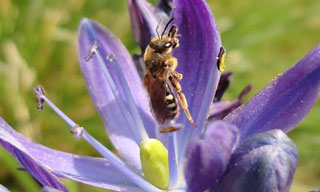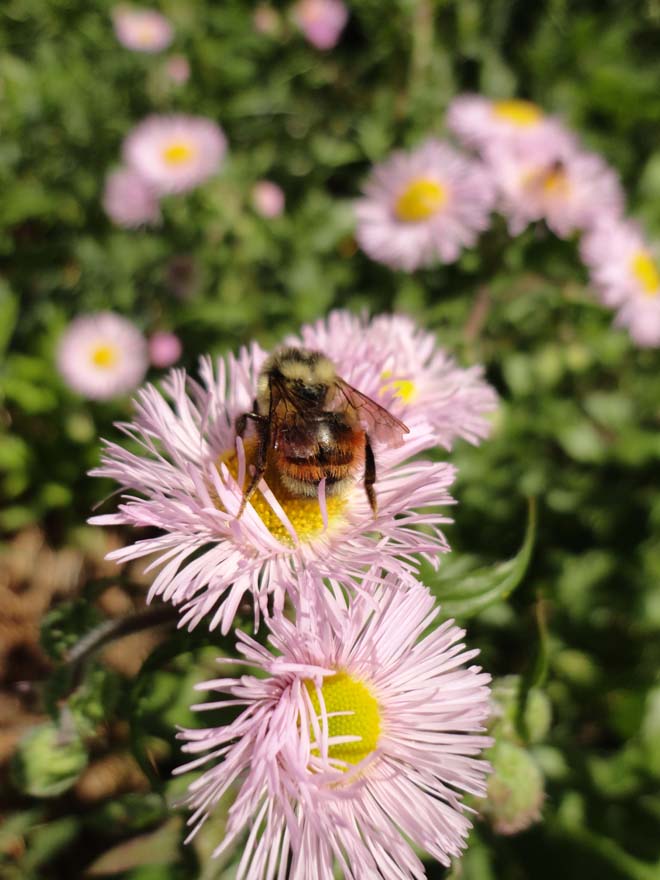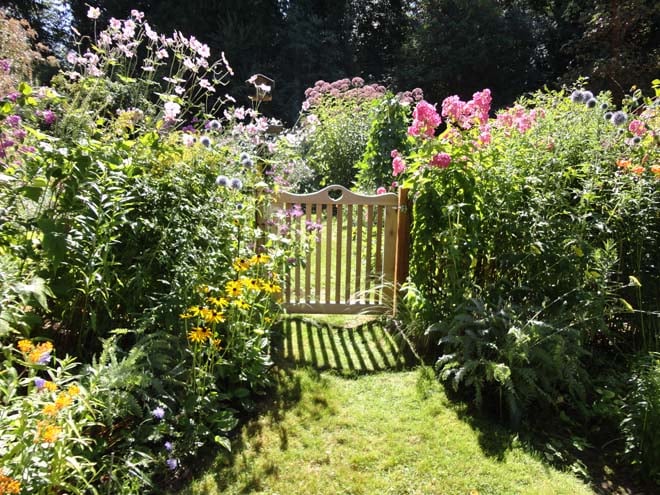
Planting for Pollinators

Contributor

Gardens planted with pollen and nectar rich plants create critical habitat connections for pollinators within an increasingly fragmented environment. Even the smallest plot,container garden, or rooftop planting, can help support native pollinators. If your garden is close to larger private gardens with native plants, organic community gardens, nature reserves, rural parks with native plant populations, or greenways with native trees and shrubs, its effectiveness will extend beyond your property.
The West Coast has several climate zones with distinct native plant populations that host specific native pollinating insects. Know your climate zone and plant to provide resources for local pollinators. For localized expertise and advice, search out skilled gardeners in your area who plant with a pollinator focus.
[sidebar]The following garden guides provide an important introduction and continuing reference.
- California Native Plant Society: www.cnps.org
- Native Plant Society of Oregon www.npsoregon.org
- Washington Native Plant Society www.wnps.org
- Pollinator Partnership offers excellent guides in pdf format for more than 30 major ecological regions of the continental United States, including all regions of the West Coast, with specific listings and descriptions of pollinator friendly plants by region. www.pollinator.org/guides.htm
- National Wildlife Backyard Habitat website includes detailed plans for school and backyard habitat environments. www.nwf.org/How-to-Help/Garden-for-Wildlife/Certify-Your-Wildlife-Garden.aspx
- “Gardening for Native Bees in North America” is a free download available from the United States Department of Agriculture. www.ars.usda.gov/Main/docs.htm?docid=12050
- The Xerces Society is a nonprofit organization that protects wildlife through the conservation of invertebrates and their habitat. Their website features a variety of programs, publications, and fact sheets relating to pollinator conservation. www.xerces.org[/sidebar]

Plant a pollinator friendly garden
1. Seek the sun. Position your garden in an open sunny location.
2. Go native. Native plants attract more native pollinators and require less water and added nutrients. Many natives have developed specialized structures (floral syndromes) for specific pollinators that have evolved with regional plants.
3. Stick to the classics. Old-fashioned non-native ornamentals are more likely to offer pollen and nectar than fancy new hybrids. Bumblebees, for example, are attracted to old-fashioned hollyhocks (Alcea rosea), French marigolds (Tagetes patula), single blossom larkspur (Consolida sp.), unmodified snapdragon varieties (Antirrhinum majus), and nasturtium (Tropaeolum majus).
4. Completely avoid exotic invasive plants such as the purple Buddleia (unfortunately named the butterfly bush). There are many perennials that will provide abundant food for pollinators but will not invade the surrounding landscape.
5. Plan and plant for the entire year. Plants with different sizes, shapes, and colors of blossoms will attract a variety of pollinating insects. Many native bees appear at different stages over the flowering season, so they will need floral resources throughout the growing season. Wasps and flies may be the earliest pollinators in the growing season, but bumble bee queens and other solitary bees will also need early spring nectar. Grow a variety of pollinator-friendly species in large single species clumps, rather than intermixing them. A variety of single species groups with staggered flowering periods will attract pollinators from early spring to late fall.
6. Create layers in the landscape. A canopy of native flowering trees such as maple (Acer) or Pacific dogwood (Cornus nuttallii) under planted with shrubs like currants or gooseberries (Ribes spp.), elderberry (Sambuccus), or huckleberry and blueberry (Vaccinium spp.), and a mix of grasses, perennials, and annuals supplies food and shelter for a variety of pollinators. Hedgerows and other structured groupings provide shelter and possible pollinator nesting sites.
7. Avoid pesticides and other chemicals. Period. If insects are not killed outright by direct contact with pesticides, they may receive sub-lethal doses that won’t kill them immediately but can depress their immune systems so they become more vulnerable to parasites and disease. Systemic insecticides are absorbed by all parts of the plant including the pollen and nectar and may persist longer than a single year. There is no good time to apply pesticides since native bees fly at different times of the day and season. Herbicides broadly applied to weeds eliminate plants that native pollinators need for nectar, nesting, and general habitat.
8. Loosen up. Leaf litter, bare soil, the occasional tree snag or pile of branches, and discreet “messy” spots, provide ideal nesting habitat for pollinators. Seventy percent of solitary bees nest are ground nesting. The entrance holes of their nests can be seen in sunny, undisturbed, open areas of loose soil that is not overly rich cultivated or trampled. The other 30 percent are mostly tunnel nesters that will use holes such as old beetle tunnels in dead trees or the pithy centers of twigs and stems. Native bees stay within about 200 feet of their nesting site so its crucial to provide nearby flower resources.
9. Provide shallow water. A large planting saucer, the type used under big flowerpots, filled with water and a few partially submerged rocks allows insects to drink without drowning.
Share:
Social Media
Garden Futurist Podcast
Most Popular
Videos
Topics
Related Posts

Low Maintenance Gardens – Better for Pollinators and People
Autumn 2022 “I come out every day. It’s therapy, my meditation.” Janet’s young garden transformed from overgrown, invasive plants to mostly natives. The dailiness of

Calochortophilia: A Californian’s Love Affair with a Genus
Summer 2022 I can chart the progression of my life by Calochortus. For the last two decades, at least. As a teenage girl growing up

Pacific Plant People: Carol Bornstein
Spring 2022 Public gardens play a key role in demonstrating naturalistic planting design, selecting native and adapted plants for habitat, and testing techniques for reducing

Add Year-Round Interest and Winter Blooms for Pollinators
Spring 2022 This article was created from an Interview by Merrill Jensen with Neil Bell in the Summer of 2021 for our Pacific Plant People











Responses